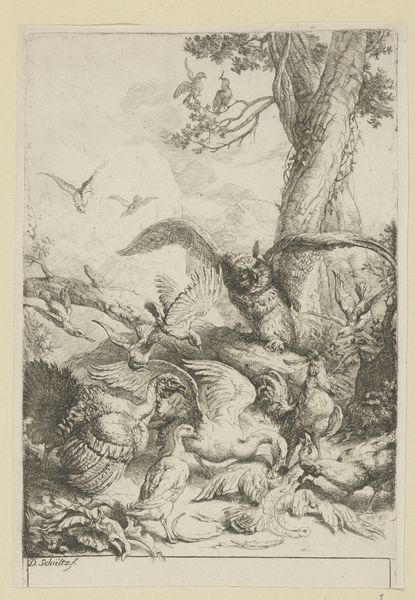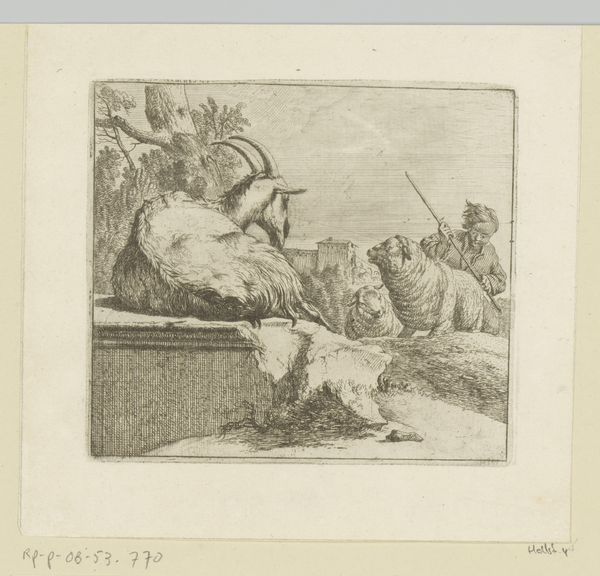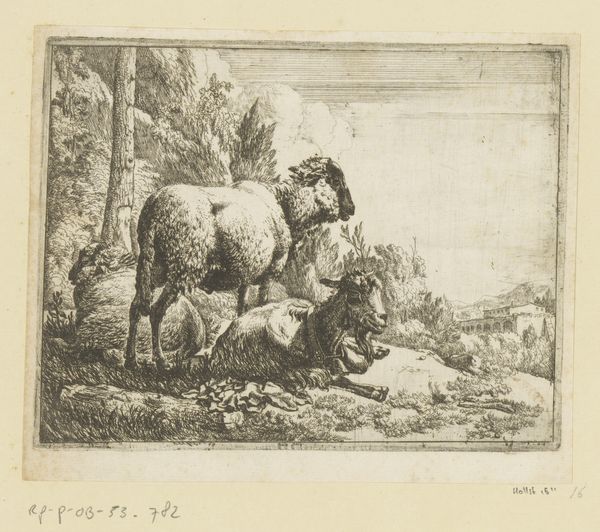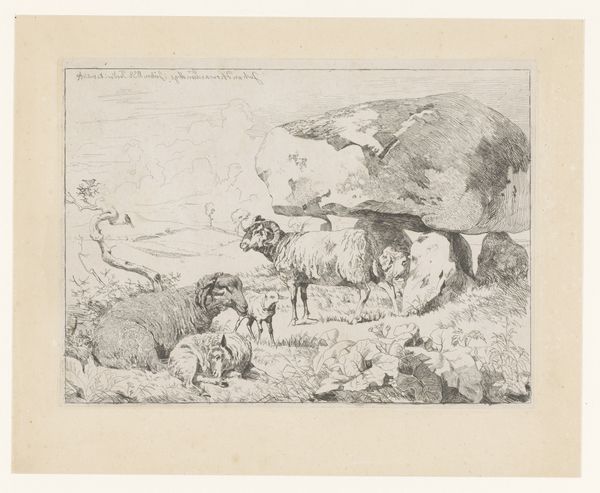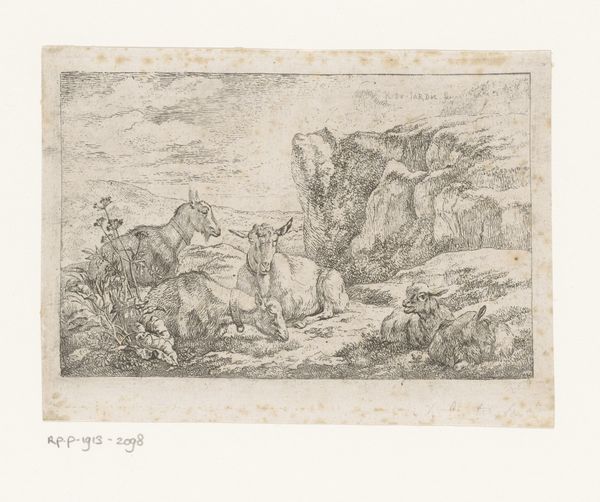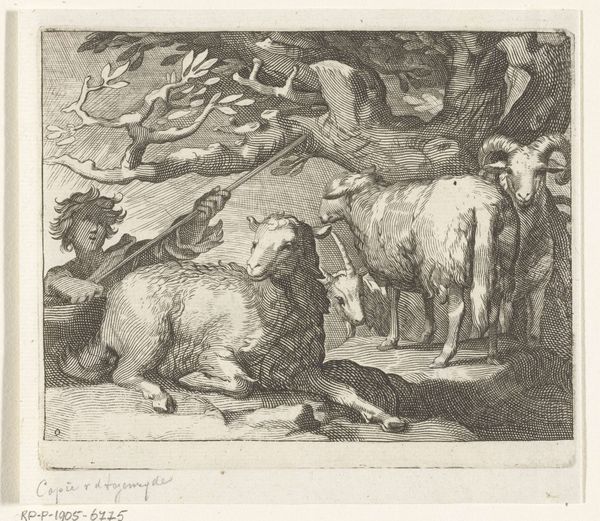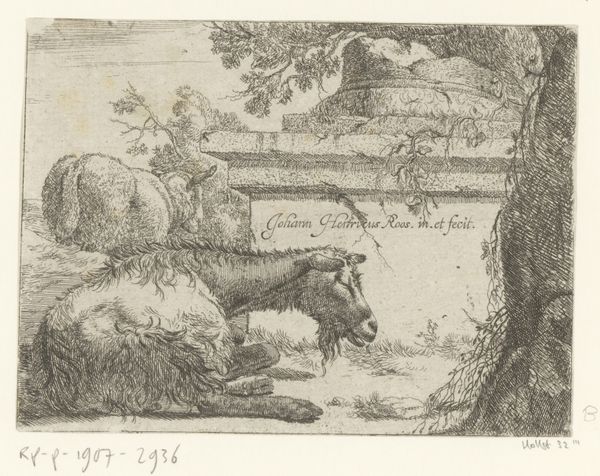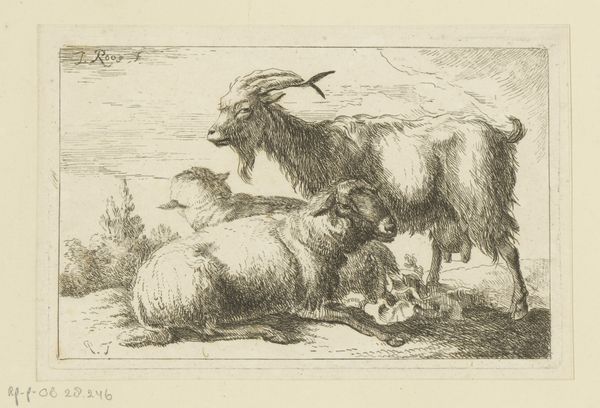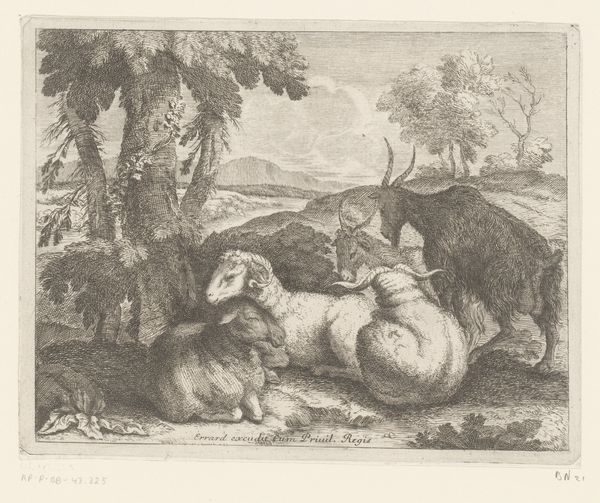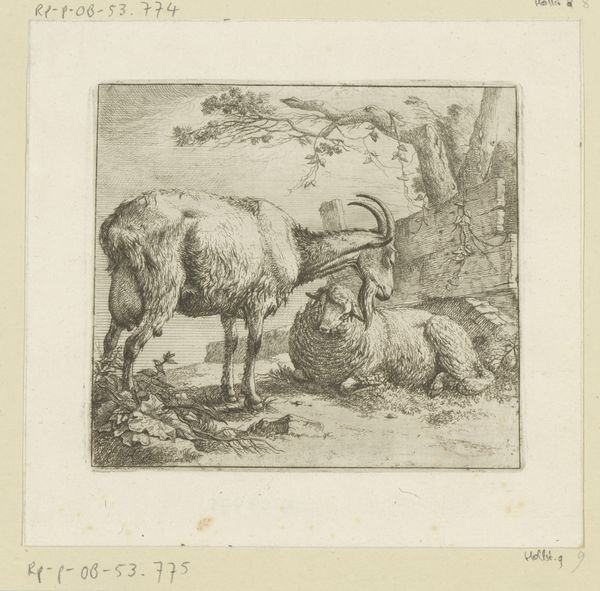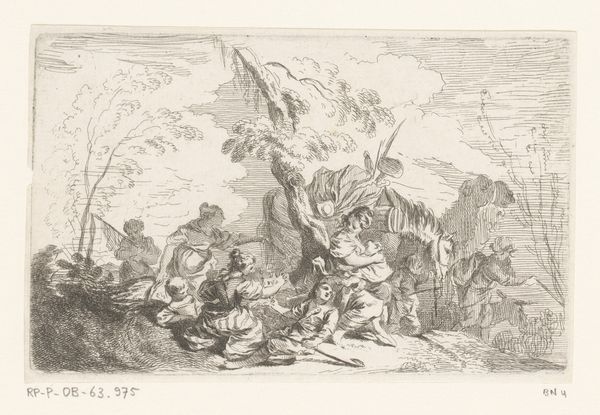
print, etching
#
baroque
#
animal
# print
#
etching
#
landscape
#
genre-painting
Dimensions: height 143 mm, width 180 mm
Copyright: Rijks Museum: Open Domain
Curator: So, we’re looking at Johann Heinrich Roos's "Geschoren schaap, liggende geit en twee schapen" from around 1665, currently residing in the Rijksmuseum. It’s an etching, a print. Editor: It has a wonderful feeling of hazy light about it, doesn't it? Almost like a half-remembered dream. The lines are so delicate, giving the animals a soft, almost blurry texture. I can practically smell the earth and the wool! Curator: Roos was quite skilled in depicting animals, as well as genre scenes and landscapes, during the Baroque period. What interests me here is the labor aspect embedded in the very title "Geschoren schaap"— "shorn sheep." Editor: Absolutely! And the goat looks utterly relaxed, positively languid, as if basking in the reward of a labor done. I like that the sheep is only partly shorn too; you get to imagine a farmer's hard work. Curator: Indeed. It makes me think of the entire textile production cycle, doesn't it? The societal consumption of resources. The image points to a chain of processes extending far beyond this idyllic landscape. Editor: You’re right, it’s deceptively simple. Thinking about it, there is this almost ironic contrast: this small-scale, rural scene feeding into larger systems of production and trade… it's fascinating! Like a bucolic scene that conceals industrious layers. Curator: That's the Baroque era for you! On the surface, picturesque imagery, yet always underpinned by these social and economic factors. Roos highlights the connection, visually foregrounding that link between animal, nature, and commerce. Editor: It's the textures too, the contrast between the roughness of the landscape against the sleek potential of that shorn fleece. And those bleating textures capture so much life… a scene made from ink, pressed on paper, capable of fooling the senses! Curator: Thinking materially, the etching process itself, biting the plate with acid, leaves a visible record of its making— it is inherently indexical, registering an encounter. Editor: Right. Well, my encounter with it leaves me with a craving for wide-open fields and wool sweaters! It makes me want to go to a farmhouse and relax with goats in the sun. Curator: It certainly provides much food for thought about human-animal relationships within broader economies. Editor: Precisely. Thanks for shearing some of that material light onto my woolly impression of Roos’ print.
Comments
No comments
Be the first to comment and join the conversation on the ultimate creative platform.
